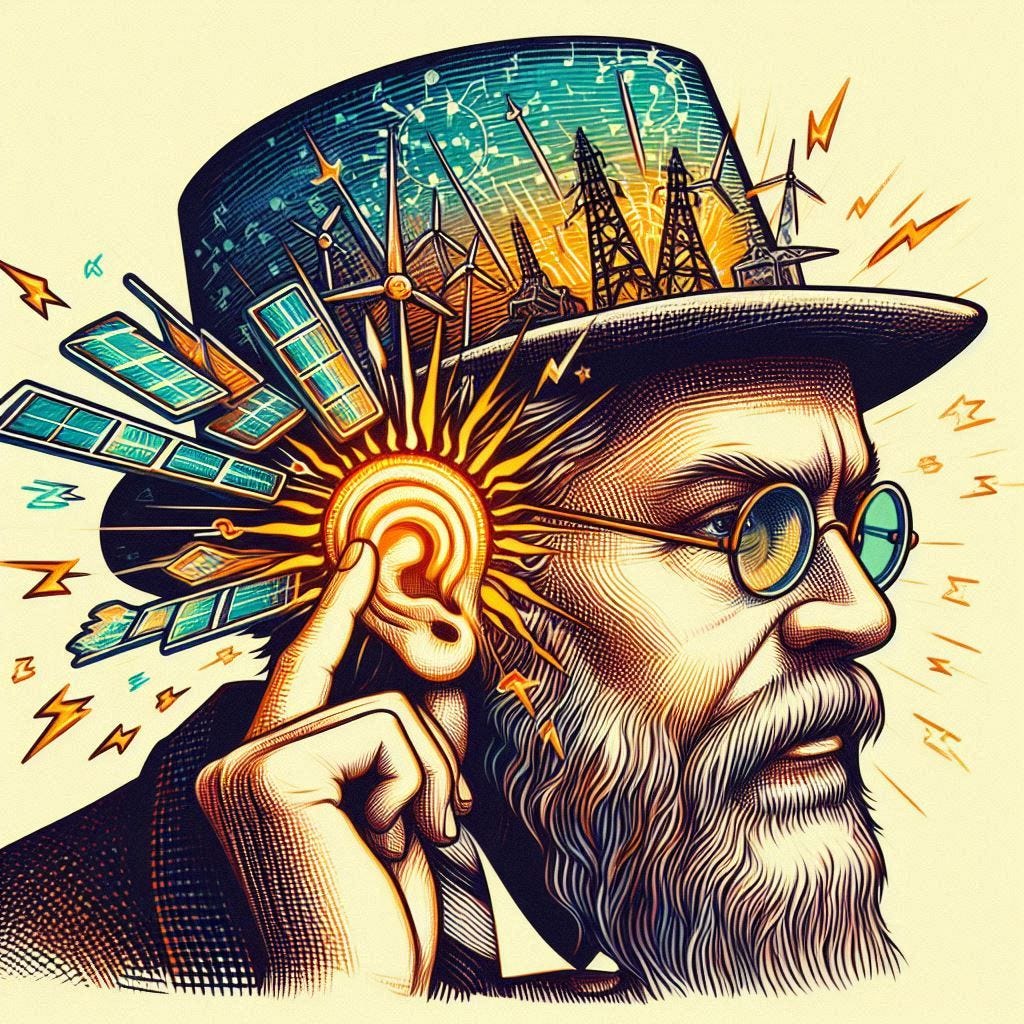The Author's Ring
It was snowing outside, casting my entire street in a wintery wonderland. It was a sort of quiet that contrasted with the high-pitched cicada in my skull. Tinnitus was my nemesis. The destroyer of worlds. I had a blinking cursor in front of me, but I couldn’t concentrate on my story. The very act of thinking felt like torture.
The half-written novel mocked me. It was ironic, a person who had dreamt up intricate soundscapes of nebulae and alien choirs, couldn’t even hear the tapping of my keyboard.
White noise machines? Useless. Mindfulness? Only made it worse. Herbal teas? I couldn’t get past the taste.
In a final desperation, I finally decided to consult a doctor. Dr. Emma Chord was an audiologist specializing in, as her website put it, “innovative auditory solutions”.
As soon as I stepped in, she gave off a calm, reassuring aura like a seasoned starship captain who’d seen it all.
After enduring the familiar indignity of the hearing test (confirmed: high-frequency hearing loss, obviously), I poured out my woes and my creative paralysis.
Dr. Chord listened with empathy.
“Nick, tinnitus is a beast. But it’s not untamable. We have new options that might work for you. Have you heard of Transcranial Magnetic Stimulation? TMS?”
I hadn’t, but the name alone conjured images of Frankenstein’s lab and bolts of lightning.
“I can tell you’re nervous,” she laughed. “It’s far less dramatic than it sounds. Imagine your brain as a complex orchestra. With tinnitus certain sections, specifically the auditory cortex, are playing out of tune, too loud, creating a phantom sound. TMS is like a gentle conductor stepping in, using magnetic pulses to subtly retune those sections.”
She showed me a brain scan on her monitor, with areas of the brain glowing like embers.
“This device,” she pointed to a picture of a bulky machine with a padded coil shaped like a figure-eight. “Creates a focused magnetic field. We position that coil over the part of your brain responsible for auditory processing. These magnetic pulses induce a tiny electrical current, not nearly enough to shock you, but enough to influence the activity of the neurons.”
“Influence how?” I asked, my mind still thinking about my brain on fire.
“We can either increase or decrease their activity, depending on the frequency and pattern of the pulses. The goal of the procedure is to interrupt the abnormal firing patterns which are generating the tinnitus. Think of it like gently nudging those overactive neurons back into a more normal rhythm.”
The protocol was immense: five days a week, for four weeks, with sessions lasting about half an hour.
“It’s not a magic bullet,” she warned. “This doesn’t work for everyone, and the effects can take time. But it’s been shown in numerous studies to reduce both the loudness and distress of tinnitus, especially when combined with sound therapy.”
I decided to agree. What did I have to lose besides my sanity?
The first session started a week later and it was uncomfortable. I sat down in a comfortable reclining chair. It was a bit like sitting in a dentist’s chair, except without the dank odor of cleanliness. Dr. Chord’s assistant carefully positioned the coil against the left side of my head, tickling the top of my ear. It was a bit cold and heavy.
Once it was settled, the machine came to life. A series of rhythmic clicks began.
click-click-click
click-click-click
Each click was accompanied by a distinct tapping sensation on my scalp. It wasn’t painful. It was more like the tap of a foam finger. I closed my eyes, feeling the rhythm relaxing me. I tried to imagine a gentle rain or a soft breeze, anything but the infernal whining in my head.
The first few sessions were uneventful. The foam finger did its thing and then I left. My tinnitus was as loud and obnoxious as ever. I started to worry that I was one of the unlucky ones, cursed to live forever in a sonic hellscape of my own brain.
Then a miracle happened the morning of my fifth session. I woke up and for a fleeting moment the world felt quiet. The tinnitus was still there, but muted. It was like the volume knob had finally been turned down a few notches.
Hope, a fragile flame, had been rekindled.
The sessions continued. The taps became familiar, almost comforting. With each passing day, the silence grew. It was not a complete silence, but some breathing room between me and the infinite noise. I began to appreciate the small noises of the world: the birds outside my window, the rustle of pages in a book, the orchestra of crickets as I fell asleep.
One evening, as I sat down at my computer, I finally was able to let words flow out of my head onto the screen. The novel started filling with the sounds of a dying star, the whispers of a lost civilization, and the murmurs of the cosmos. The tinnitus was still an unwelcome guest, but it had been banished to a remote room of my skull.
At my final appointment, it took a lot of willpower not to hug Dr. Chord.
“You didn’t just give me back my hearing,” I told her, feeling my throat grow tight with emotion. “You gave me back my voice.”
She gave me a reassuring smile.
“The brain is a remarkable instrument, Nick,” she noted. “It has the incredible ability to heal and adapt. The TMS is just a tool. You did the hard work.”
I walked out of the clinic into the bustling city. I could hear the sounds of traffic and the chatter of people. It wasn’t a cacophony, it was a symphony. And for the first time in a while, I could hear my own part.


